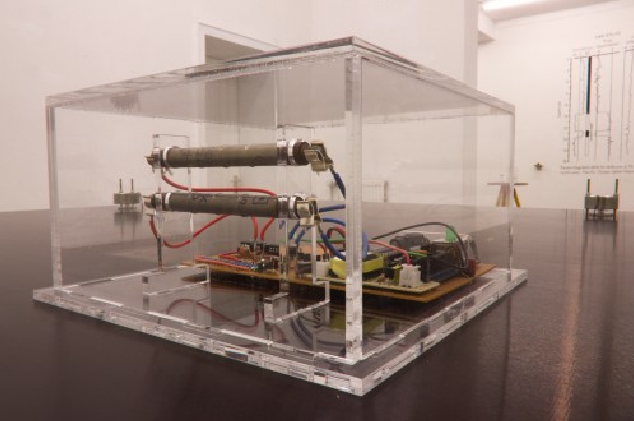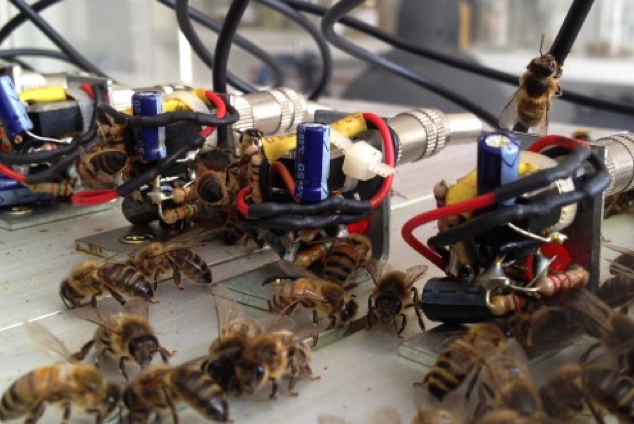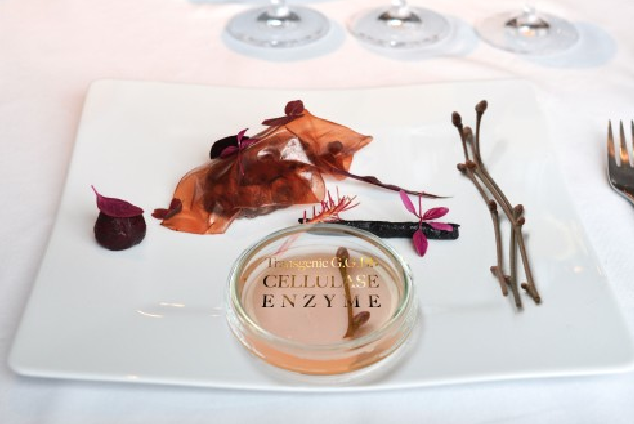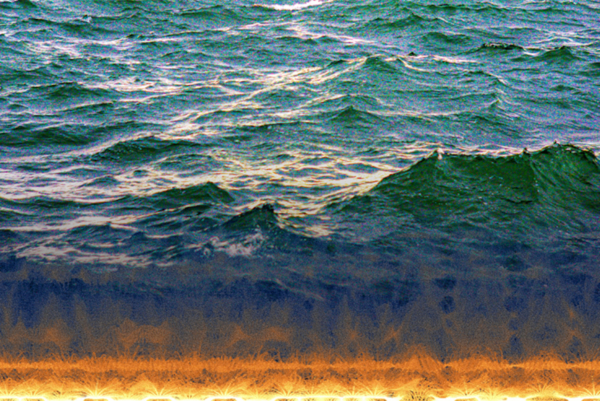
ÉCOFEMMES FEST – MINERVA
L’association MINERVA présentera ÉCOFEMMES FEST, le premier festival en France consacré à l’écoféminisme. Pendant trois jours, artistes, chercheuses, journalistes et…
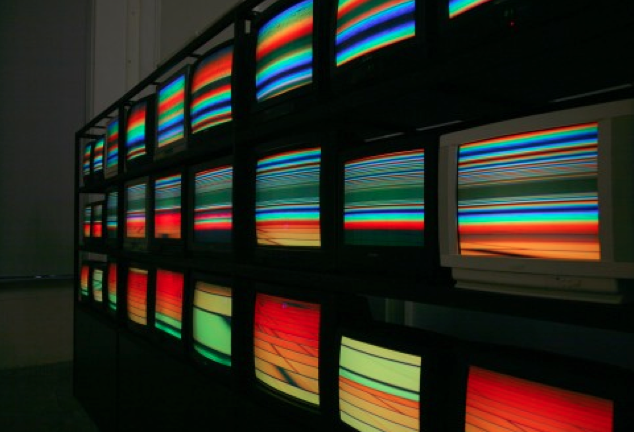
FIELDS exhibition
A European Capital of Culture Event
Arsenals Exhibition Hall of the Latvian National Museum of Art
May 16 – August 3, 2014
Fields – patterns of social, scientific, and technological transformations.
The changing role of art in society is one where it does not just create a new aesthetics but gets involved in patterns of social, scientific, and technological transformations. Fields, jointly curated by Rasa Smite, Raitis Smits and Armin Medosch, presents an inquiry into patterns of renewal and transition. The curators asked which expanded fields of artistic practice offer new ideas for overcoming the crisis of the present and developing new models of a more sustainable and imaginative way of life.
In preparation for the Fields exhibition, a widespread survey was undertaken, that did not just look at art in the narrow sense but all kinds of creative practices that bring together new thinking, scientific knowledge, aesthetics, technologies and social practices. A year in advance, a public call was launched that was met by over 200 proposals. The curators of Fields could draw on international networks such as Baltic-Nordic Renewable Network and the European collaborations Techno-Ecologies and Soft-Control. The artist-in-residency series Fieldwork on measurement ship Eleonore, Linz 2013, aimed at creating ideas and projects for Fields. Workshops and panels at Transmediale 2013 – Berlin, Pixelache 2013 – Helsinki, and the Media Art Histories conference Renew – Riga, October 2013 were used to discuss work and taxonomies for Fields.
From the 200 proposals received through the public call, the curators have chosen 40 works from all over the world, but with a special focus on Central, Eastern and Northern Europe. Fields will be exhibited between May 15th and August 3rd 2014, at the Arsenals exhibition space of Latvian National Arts Museum, the largest and most important exhibition space for contemporary art in Riga, as a part of Riga – European Culture Capital 2014. The exhibition will be accompanied by public lectures, Renewable Futures conference as well as artist performances and concerts. A catalogue will be produced, which will consist of a special issue of the Acoustic Space peer reviewed academic journal, jointly issued by Liepaja’s University Art Research Lab and RIXC.
Rasa Smite and Raitis Smits are artists and founding directors of RIXC, an art institution in Riga, Latvia, whose Art + Communication festival has become one of the most important festivals of this kind in Europe and worldwide. Armin Medosch is a curator, writer and artist based in Vienna, Austria. The Fields exhibition is a follow-up project to Waves 2006, which was also shown at Arsenals in Riga, co-curated by Smite, Smits and Medosch.
The curators selected works that are considered to be contextual seedbeds for social change. The changing role of art in society is one where it does not just create a new aesthetics but gets involved in patterns of social, scientific, and technological transformations.
Fields presents a lively landscape of art that challenges existing viewpoints and deconstructs social issues, but also proposes positive visions for the future. A premise behind this project was from the very start that no single field and associated label can do justice any more to the diversity of contemporary art practices. Typically, today, the most interesting practices are transdisciplinary and transformative – they rely on new combinations of existing fields-as-in-disciplines, combining the artistic with the social and the natural, the scientific and the emotional, the sensible with the actual.
Fields opens up the contemporary field for a free and associative play of radical taxonomies, remixing and recombining existing categories, thereby carrying out important boundary work that gives a new shape to the contact zones between art, science, technology and social engagement in the 21st century.
While the final list of artists may still change, we would like to present some examples for the radical diversity of approaches: The relationship with nature plays a major role in this exhibition, often in combination with ideas from the open culture that emerged on the net, about sharing resources and tackling social issues through participatory and social mechanisms.
In some cases, such as Leave it in the Ground by Oliver Ressler (2013), or Seedsunderground (2013-14) by Shu Lea Cheang, the work carries a clear and direct political message, concerning issues such as renewable energy, sustainability or the fight for the diversity of agricultural seeds and plants.
Other work, less overtly political, opens our senses and minds to new ways of seeing the world, referring to what French philosopher Jaques Rancière calls the ‘distribution of the sensible’. Lisa Jevbratt shows how different reality is if we imagine to look at the world with animal eyes. The Belgian collective Okno combines rooftop gardening and beehives to create new maps of the distribution of plant life in cities. Erich Berger measures changes in the magnetic field of the Earth. Manu Luksch offers a free ride on a water taxi in exchange for a conversation with Kayak Libre.
The human body itself becomes seen as a node in a complex network of force-fields, where nature, genetic science and political and economical topics intersect. The Latvian artist Gints Gabrans proposes to modify our bodies so that, with the help of new enzymes, we can eat grass and tree branches. Hu.M.C.C.- Human Molecular Colonization Capacity project by Maja Smrekar, Slovenia, uses an enzyme from the artist’s body to create a yoghurt. Hans Scheirl’s paintings and installation Transgenic (TM) breaks through barriers between 2D and 3D, simultaneously opening up new ways of artistic and bodily trans-gression.
The intersection of social and visual fields is the topic of works by Austrian video artist Annja Krautgasser’s Prelude (2010) and media artist Hannah Haslaati, Finland, who uses principles known from Gestalt psychology to make group dynamics visible. The intersection of the globalised economy with digital technologies, financial markets exploitative labour practices and culture and concerns of local communities and indigenous people are addressed in works such as Histoire Économique (2013) by British artist Hayley Newman, Working Life (2013) by Danish artist collective Superflex and Eccentric Archive (2012-14) by Ines Doujak and John Barker.
The relevations by Edward Snowden about global surveillance activities of the USA through its PRISM program has made evident how important the invisible world of data flows and data bases is. Data fields, battlefields and the war on terror mark the background for works such as Endless War (2012-14) by British-Japanese artist couple YoHa (Graham Harwood and Matsuko Yokokoji), and We should take nothing for granted! – on the building of an alert and knowledgeable citizenry by Slovenian artist Marko Peljhan and Project Atol.
The relationship between matter and information, as suggested by cybernetics pioneer Norbert Wiener, is the topic of the Earth Computer (2014) Martin Howse and Ghostradio (2014) by Pamela Neuwirth, Markus Decker and Franx Xaver.
Artists such as Martins Ratniks’ installlation with 27 CRT TV screens, and French artist Cecile Babiole’s sound installation are engaging with the raw energy of electrical and electro-magnetic fields, continuing work started with the Waves project in 2006.
Relationships between electrical and biological fields inform the collaboration between Latvian sound artist Voldemars Johansons and RIXC’s own project Biotricity (bacteria battery) in a result of which live music is generated from electrical signal fluctations that are made by living micro-organisms.
These are some key topics and examples of up to 40 works that will be shown at Fields.
Curators – Raitis Smits, Rasa Smite (Latvia) and Armin Medosch (Austria). Producer – RIXC, The Centre for New Media Culture.
Artists: Oliver Ressler, Shu Lea Cheang, Lisa Jevbratt, Superflex, Gints Gabrans, Marko Peljhan, Cecile Babiole, Voldemars Johansons, Erich Berger, Martins Ratniks, Hayley Newman, Annemie Maes, YoHa, Martin Howse, Franz Xaver, and many more.
Support: The Fields exhibition is supported by Riga 2014, Riga City Council, State Cultural Capital Foundation, Ministry of Culture of the Republic of Latvia, Austrian Ministry of Culture and Embassy of Austria in Riga, EU Culture 2007-2013 programme, Nordic Culture Point, The Latvian National Museum of Art, Goethe Institute in Riga, French Institute in Latvia .
Partners: Soft Control, Techno-Ecologies, Renewable Network, Liepaja University’s Art Research Lab (MPLab), Latvian National Museum of Art.
More informations
rixc.org
RIXC
The Centre for New Media Culture
Maskavas Street 10
LV-1050
Riga
LATVIA
L’association MINERVA présentera ÉCOFEMMES FEST, le premier festival en France consacré à l’écoféminisme. Pendant trois jours, artistes, chercheuses, journalistes et…
L’Observatoire de la Côte d’Azur accueille Unda Terræ, une exposition collective art/science imaginée par Circa dans le cadre de la…
L’exposition Enredos II de Nuno da Luz dans laquelle le Centro Botín (Espagne) devient un corps acoustique vibrant à travers…
